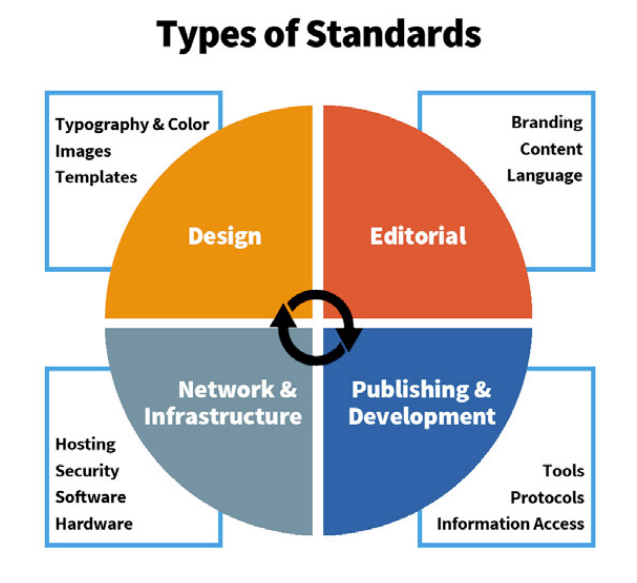
7 successful components in companies social media governance plans
On social media, many messages are amplified. While social media enables B2B marketers to promote their brands and be heard, it also empowers audiences, who are quick to voice their opinions.
69% of B2B buyers will share their poor customer experiences on social media or online review platforms. One negative comment might be inconsequential, but small mistakes can lead to big problems.
Your team must pay special attention to the information it shares and how it interacts with customers and prospects online. This is where a social media governance plan comes in and helps underline your social strategy.
What is social media governance?
Social media governance is processes and policies that regulate social media posting and commenting activity for marketing teams. It helps establish the ground rules for using social media responsibly and effectively, in line with the company’s brand, positioning, and regulations.
It also helps you adhere to legal requirements from standards regulating online data protection and customer privacy, such as GDPR and CCPA. These standards consider issues like copyrights, defamation, and customer data privacy, which are vital for safe social media usage.
On top of that, companies will often have their own confidentiality rules that employees must adhere to. Social media governance plans will offer guidance on leveraging social media in line with these rules. For example, your plan could include what to write and share on a social media platform or how to engage with users in a specific situation. Social media governance is designed to protect a company’s reputation and manage risk while empowering employees to leverage social media to achieve business goals.
Why do marketing teams need a social media governance plan?
1. Regulatory compliance
Social media is an increasingly regulated environment. B2B marketing teams must know each platform’s legal requirements, industry standards, and regulations that enforce data protection and advertising restrictions. A social media governance plan usually encompasses a set of guidelines to help teams manage social media while complying with regulations.
2. Brand protection
This plan details the company’s tone of voice, positioning, and other considerations like inclusivity and cultural sensitivity. Such detailed guidance helps you define a clear voice your team can use across platforms to ensure consistency and increase brand visibility. It also prevents you from sending confusing or contradictory messages on different platforms, weakening customer trust.
A strong governance plan also typically includes response protocols to crises. By knowing exactly how to respond to criticism or complaints, your team can be quick on their feet to reply to users online, remediate negative brand sentiment, and prevent it from escalating into a full-blown crisis.
3. Employee mistakes
Employee advocacy is fantastic for expanding your audience reach by leveraging your employees’ social networks. However, it does come with branding risks. You can’t control what your employees post online, so there is always the risk that they may inadvertently post content damaging to your business or share sensitive information.
Social media governance plans provide clear guidelines for advocating for your brand on social media, including what is appropriate versus inappropriate to say and best practices for content creation. This, in turn, will help you monitor your employee advocacy efforts more efficiently and avoid slip-ups.
4. Performance and engagement
Social media governance plans aren’t just about preparing for the worst. A solid plan should include KPIs for performance and engagement, helping you monitor progress, identify areas of improvement, and adapt your strategy to achieve your goals. Performance metrics like comments and shares, Click Through Rate (CTR), conversion rate, and customer sentiment should all be a part of your social media governance plan.
These KPIs will also feed into the bigger marketing picture, helping you align your social media efforts with other marketing initiatives such as campaigns and SEO.
5. Security breaches
Social media is a haven for private information that hackers would love to get their hands on. A solid social media governance plan typically has a cybersecurity section detailing the security measures employees must follow to safeguard company and customer information and even to protect the company’s social media accounts. This security training is crucial in preventing attacks like social engineering, which can quickly lead to irreversible data breaches.
Recommended for further reading
The challenges of implementing social media governance
Social media is continuously evolving, so building a governance plan that will stand the test of time is practically impossible. Your plan must be reviewed and updated frequently (at least once a year) based on new platform features, legal requirements, and marketing goals.
If your marketing team is large, there could be some ambiguity over who is responsible for what. When roles and responsibilities are not clearly defined, or there are team-wide projects where everyone chips in, it’s more challenging to take accountability or hold people responsible for their actions.
Moreover, while having your employees talking about your solution on social media can do wonders for brand awareness, it does mean you lose some control over what’s being said about your brand. Tools like Oktopost can help in this regard, offering employee advocacy features with pre-approved copy and providing workflows to monitor performance for each employee post.

7 components successful companies have in their social media governance plans
1. Setting clear objectives and guidelines
Ambiguous guidelines are the same as no guidelines. Provide your team with specific examples of what to write versus what not to write in a particular situation, such as responding to a comment or sharing content from partner organizations.
Clear objectives are just as important. Successful marketing teams use these to monitor progress, measure performance, and adapt their B2B demand generation strategies to meet their goals.
2. Customizable crisis management templates
If your service or product experiences disruptions, is your marketing team ready to deal with frustrated customers? When Salesforce suffered an outage in 2021, customers took to social media to share their frustrations, even making the hashtag #SalesforceOutage trend on Twitter. Thankfully, the Salesforce team quickly responded, took accountability, and reassured customers that the issue was being resolved.
Having a crisis management template that you can adapt to different crisis scenarios will enable your team to respond to crises like this promptly and effectively. Quick action and accountability are vital to maintaining brand trust and mitigating damage to your reputation online.
3. Straightforward approval processes
Without a straightforward approval process, your social media content will be all tangled up. Before you know it, multiple people have reviewed it, and the copy looks entirely different from the original version. Plus, tracking what was modified or approved and by whom will be difficult.
Successful marketing teams have a straightforward approval process to enable efficient content management and ensure that the right people review the content before it goes out. They may also leverage specific tools that automate approval processes for all social content.
Oktopost offers workflows that marketing leaders can customize to define specific steps for content approval and designate approvers based on their roles. You can also track all post revisions via version control and get automated notifications for new content approvals.
4. Data security awareness training
Your data is your most valuable asset. Encourage your marketing team to report anything out of the ordinary to IT so they can investigate it promptly. You can even set up a specific social media security workflow to make reporting and tracking issues easier.
Your employees should also have basic security awareness training so they are aware of specific procedures and what issues to look out for. Lastly, vet any third-party tools you use to ensure they have all the relevant security features to protect your data.
5. Brand reputation management
Brand reputation management is maintaining a positive brand image across social media platforms. To do this, you should define guidelines for responding to customer feedback and leverage and leverage social listening to monitor online conversations and measure customer sentiment actively.
Ensure you frequently review who your advocates are, the information they share about your brand, and all other brand mentions in posts, comments, and shares. You can then use this information to celebrate your biggest advocates and empower the rest of your team to promote your brand with their networks more actively.
6. Creating a role hierarchy and defining responsibilities
Assign different people specific roles within social media. Consider categories such as content creation, community building, paid ads, design and multimedia, or compliance monitoring. All employees should be clear about the specific tasks they are overseeing.
Create a hierarchy of roles so everyone knows their authority level, who needs to approve their tasks, and when to seek help or further input. If you’re leveraging a third-party B2B marketing agency, you should also consider these resources when defining roles and responsibilities for social media management.
7. Paid advertising
Not everything is fair game in the advertising world. Plus, mistakes happen, even to industry giants. Amazon’s advertising strategy is often top-of-its-league, but on Prime Day 2021, Amazon faced customer backlash after showing bizarre products to users that were completely unrelated to their preferences. An AI mistake can be just as consequential as a human mistake.
Successful companies have guidelines for setting up campaigns, securing the tech, writing ad copy, and producing visuals that align with the company’s branding and positioning. Equally important is to meet regulatory requirements, particularly those related to consumer protection, truth in advertising, anti-spam, and intellectual property.
If you fail to meet such requirements, platform owners can delete your ads or suspend your account.
Making social media governance work for you
A successful social media governance plan must be tailored to your company’s needs and requires frequent reviews and updates. Yet, it is a crucial document to ensure that you’re leveraging social media in the most beneficial way for your brand.
If you want to make social media governance easier for your team, tools like Oktopost can help. Oktopost offers customizable approval workflows that can help your team stay on top of their governance requirements. Plus, you can manage all social media networks in a single centralized hub, ensuring brand consistency and compliance. Learn more here.






